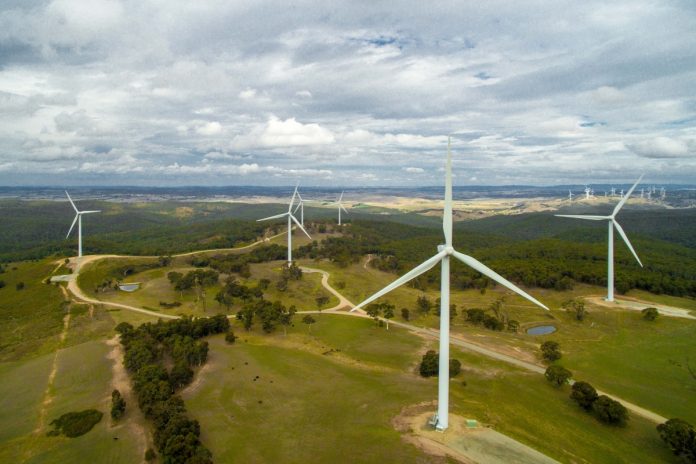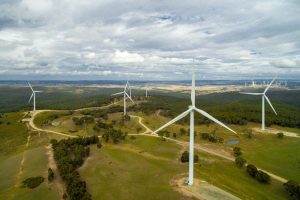
The Australian Renewable Energy Agency (ARENA) is giving $9.9 million support for New Gullen Range Wind Farm Pty Ltd (NGRWF) to develop and construct the $26 million project.

Image credit: gullenrangewindfarm.com
The 10-MW solar park is scheduled for completion in July 2017, adjacent to the existing Gullen Range Wind Farm.
Australia’s first large-scale solar farm to be co-located with wind turbines will be built near Canberra, in a development that promises more reliable, cheaper renewable energy.
ARENA CEO Ivor Frischknecht said solar and wind were complementary sources of renewable energy that produced power at different times of the day and year.
“Co-location provides more continuous energy generation, as wind farms tend to generate more energy overnight whilst solar only generates during the day. Gullen Wind Farm generates more power in winter and the new solar farm will generate more in summer,” Mr. Frischknecht said.
“Wind farm owners across Australia could benefit from adding solar plants to their existing sites. Developers can save money on grid connection, approvals and site development costs by co-locating wind and solar plants, whilst also reducing environmental impacts.”
Mr. Frischknecht also said that according to NGRWF, the potential co-location savings for the Gullen Range Solar Farm could be as high as $6 million, representing a 20 percent drop in total project cost.
“There is huge potential to adopt this approach at other wind farms. An ARENA-supported study found there’s an estimated 1000 MW of potential opportunities to add solar PV alongside existing wind farms – enough to power 700,000 homes. We expect this to more than double by 2020 in line with Australia’s renewable energy target.”
He said Gullen Range Solar Farm could show co-location is the most inexpensive way to construct large-scale solar and would be a key impetus for encouraging future projects.
“ARENA is focussed on bringing down the cost of renewable energy and encouraging more projects to enter the market,” Mr Frischknecht said.
“This is the first project of its type in Australia, so the lessons learned will be invaluable. It has the potential to provide a blueprint for future projects and cement industry confidence in the approach.”



















